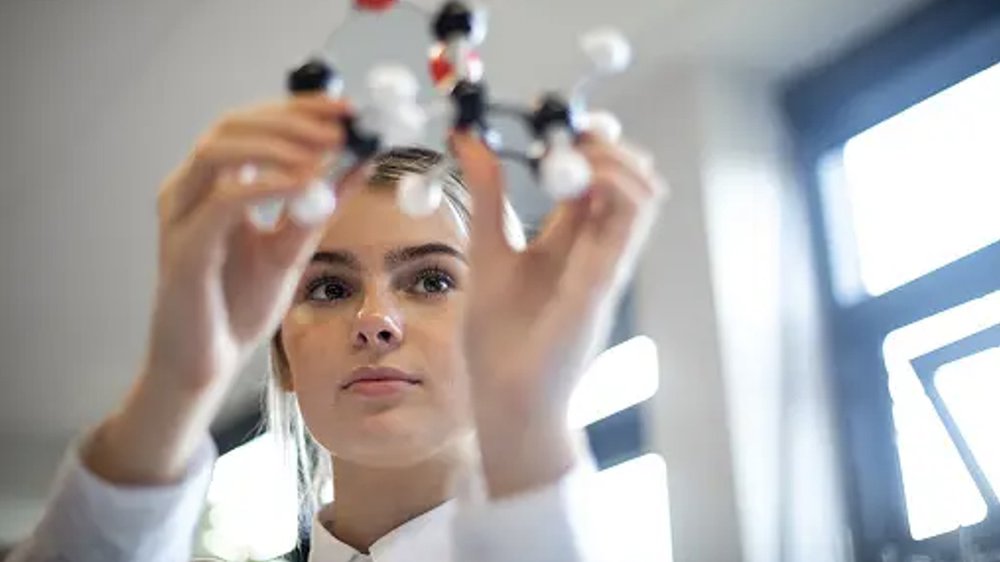Ever since human beings started passing down knowledge, we have had to make assumptions about how learning happens and how to teach so that learning occurs. And it must have been obvious from early in our species’ development that people learn differently and have different skills. When the knowledge and skills we needed to pass down were truly a matter of survival on a daily basis, our ancestors must have known that it doesn’t matter how much teaching is going on if learning isn’t happening.
As education became a separate and specialized role -- and as the fields of psychology and neurology and neuroscience developed – and as the medical field learned about the brain, first from looking at autopsied brains and more recently from brain scans – many theories of learning have been put forth. These theories have attempted to explain various aspects of human behavior and how people acquire and retain new information and skills.
Some Fascinating Early Learning Theories
Discipline Theory. In the 17th century, philosopher John Locke wrote, among his many works, advice on the education of a gentleman entitled Thoughts on Education, and An Essay concerning Human Understanding. He is known for his emphasis on the importance of “discipline,” that is, engaging in intellectually challenging study, such as learning Latin and math, as a way to develop skills that can be transferred to other disciplines. While the theory has not survived in whole, there are aspects that seem to presage what we know today from modern neuroscience. For example, he emphasized that we learn from experience and through our senses, describing the mind as being like white paper or wax on which impressions are made. Today, we know much more about what happens when we interact with the environment, and the brain is not like wax receiving impressions, but Locke has it right that knowledge and understanding come from experience. The degree to which learning can be generalized is still a topic of great interest and substantial debate and we’ll come back to this when we describe the science of learning.
Phrenology. People who studied phrenology believed that a person’s personality traits and intelligence could be discovered by examining the contours of the skull. The shape and size of various bumps were “responsible” for the differences in behavior, according to proponents such as Franz Joseph Gall, in the late 18th and early 19th centuries. The bumps reflected characteristics of underlying brain structures, according to this theory, which is now clearly and appropriately classified as pseudoscience, but it did point to the brain as the seat of learning.
Magic Bullet Theory / Hypodermic Need Model. This theory of learning posits that people react uniformly and passively when information is “shot” or “injected” into their heads. Popularized as an explanation for the impact of mass media communication following the 1938 broadcast of the War of the Worlds, the concept that propaganda is universally effective with a “helpless” audience has now been debunked. One wonders, however, whether there is any connection between this theory and the superstition that one can learn the material in a textbook by placing it under one’s pillow while one sleeps.
Modern Influential Learning Theories
While it is undeniably entertaining to consider the implications of theories that are now considered outdated or even outlandish, we want to turn now to some of the most well-known and influential theories of learning. These include:
- Behaviorism is a theory of learning that focuses on observable behavior, and disregards internal thinking processes. B.F Skinner and Ivan Pavlov were important theorists and propounded models in which learning occurs through the reinforcement of targeted behaviors and the punishment of other behaviors. Current-day concepts like direct instruction and the use of rewards and punishments in education have their roots in behaviorism.
- Constructivism is a theory of learning that emphasizes the role of the learner and underscores the necessity of their active involvement to develop understanding and acquire skills. Based in the theories of Jean Piaget, Lev Vygotsky, and others, this theory conceptualizes learning as being constructed rather than acquired, and emphasizes hands-on, collaborative and student-centered, experiential learning. Inquiry-based or problem-based learning build on this theory.
- Cognitivism, which also derives from the work of Jean Piaget and others, contrasts starkly with behaviorism, emphasizes the role of the mind in learning, and characterizes how people perceive, understand and retain information. Piaget’s stages of cognitive development stressed the qualitative differences in how children learn and think at different stages of development. Concepts of scaffolding and the zone of proximal development are related to the principles of cognitivism.
- Social learning theory emphasizes the role of social interactions in learning. It posits that learning occurs through observation, imitation and the modeling of behavior by others. It emphasizes the importance of feedback and the social context of learning. Albert Bandura, a contributor to social learning theory, introduced the concept of self-efficacy, which refers to one’s belief in their ability to succeed in specific situations.
- Humanism and theorists like Carl Rogers and Abraham Maslow envision learning as a process of personal growth and self-actualization, involving self-discovery and focusing on learner’s emotions and psychological well-being. Education that focuses on the whole child and creating supportive, nurturing learning environments that foster self-directed learning and self-realization, are informed by this tradition.
- Multiple Intelligences is a learning theory, advocated by Dr. Howard Gardner that suggests that intelligence is not a single general ability but a combination of several distinct types of intelligences, such as linguistic, logical-mathematical, spatial, musical, bodily-kinesthetic, interpersonal, intrapersonal, and naturalistic. This theory has encouraged educational practices that value and cultivate different types of talents in students and that allow for different ways of demonstrating learning. The concept of adapting instruction to students’ “learning styles” has not survived scientific scrutiny but continues to be accepted by many educators.
- Learning Process Theory characterizes the steps or stages of learning, focusing on cognitive processes, feedback mechanisms and the application of knowledge. Stages or phases of learning, such as perception, encoding, storage, retrieval, and generalization are seen as interconnected steps, consistent with a general information processing model. Each state of process involves certain mental processes or cognitive skills.
The Science of Learning
The science of learning enables us to examine these and other theories through the lens of research in the fields of neuroscience, cognitive psychology, clinical therapy and education, and to take and apply the aspects of these theories that are supported by the evidence. It is a multidisciplinary view that helps extend brain science to educational practice and makes learning more predictable and productive. In delving into the science of learning we can ask questions such as what is the biggest predictor of strong academic outcomes? What are the skills that learners use to learn and how do they develop? And what if we viewed the brain as an integrated whole that produces academic, emotional and behavioral outcomes, rather than treating the outcomes as having separate root causes?
One important finding in the body of research on these theories is that cognitive skills predict 50 percent of the variance in academic outcomes, more than any other factor in the learning and teaching equation. The reason that this is so important is that most educators are not familiar with cognitive skills and how they can be developed. A great deal of time and effort in education is focused on the “what” of learning – teachers map curriculum, they are asked to teach certain specific content and skills, they and the administrators that guide them are measured by how well their students perform on measures of what they know.
The science of learning redirects some of that energy to the “how” of learning and the cognitive skills that students use to learn.
Importance of the Science of Learning for Educators
The science of learning is important for educators because it has the potential to improve education at all levels from preschool to adult education. It can help improve teaching practices because educators who understand how people learn can design more effective teaching methods and learning environments. This can lead to better outcomes for students, increasing engagement and motivation.
It can also help educators and learners be more efficient in the learning process. For example, by using techniques such as spaced repetition and interleaving, learners can retain information more effectively and with less effort. The science of learning also helps apply our understanding of individual differences in cognitive skills to personalize learning experiences and better meet the needs of each learner.
Importance of the Science of Learning for Kids
The science of learning is important for kids because it can help them become more successful learners and develop a positive attitude toward learning. When kids understand how their brains process information, they can use learning strategies that help them learn more efficiently and effectively. This helps build self-confidence.
Additionally, when kids know that cognitive skills can be improved and developed to a greater extent than most people realize, learning becomes easier and fun. When learning experiences are engaging and motivating for kids, they stay interested and invested in their learning and persist through the inevitable frustrations and difficulties of learning new things.
The theory of multiple intelligences was directionally correct – intelligence is not a single think – but the actual skills involved in learning are far more basic and largely non-conscious in nature, so they are not particularly amenable to direct instruction. Rather, in order to develop a student’s capacity for learning, or their cognitive skills, there are some principles of the science of learning that teachers, students, parents and everyone who cares about education needs to understand.
Some Key Principles of Learning
- Neuroplasticity Fuels Learning
The general term for the brain’s ability to change and to develop in response to its environment and the demands being placed on it is “neuroplasticity.” Essentially, the human brain develops by organizing itself, creating and pruning neural pathways, based on its unique experiences. The fact that the brain is constantly changing means that learning can happen throughout our lives. Understanding that learning involves physical change in the brain suggests a whole lot of questions that the education system doesn’t ordinarily ask. And the answers may support or refute all or parts of the learning theories we described above.
2. Learning for Meaning
Mankind did not evolve by learning things that were not important, relevant, meaningful or had no relationship to survival. And if we can’t connect something to what we already know, it has no meaning. Our brains are always looking for a neural network to connect new information to, to give it meaning. Therefore, effective learning experiences are built on one’s prior knowledge and level of development. But we also need to keep in mind that new knowledge and experiences can modify the old ones so schemata shift and become more complex.
3. Practice Builds Automaticity
There is an old Russian proverb: Repetition is the mother of learning (it rhymes in Russian). And it is true – sometimes. What neuroscience research has shown us is that there are two fundamentally different types of long-term memory. The two types of long-term memory are referred to as procedural memory and declarative memory. Procedural memory is how we learn to walk, tie our shoes, shoot a basketball, type, drive, and the list goes on. These are skills, generally involving physical skills, that we develop to the point where they no longer require conscious thought. Think about when you first learned to drive a car – put your foot on the brake pedal, turn the key (or push start), look around you, shift gears (or press the clutch and then shift gears). At first it was very conscious. Now, most likely, you can drive to work without ever giving a thought to any of those steps.
Declarative memory is a whole different ball of wax.
Slight digression. Where does that expression come from? Well, possibly it is based on a 17th century English legal procedure for dividing up land inherited by siblings. Scraps of paper with descriptions of parcels of land written on them were rolled around wax balls. The balls were drawn by the siblings, with each drawing his or her “lot” and then unwrapping his/her “whole ball of wax.”
Apochryphal or not, it’s a common expression and one that many students will struggle with. Students who struggle with verbal reasoning, an important cognitive skill, will likely have difficulty understanding the meaning of the idiom without some other connection – perhaps like acting out the alleged source of the term. Helping students make connections is essential for declarative memory.
When an individual performs an activity repeatedly, the skill becomes automatic (embedded in procedural memory) and does not require conscious thought to execute. For declarative memory, elaboration (working with talking about, exploring, re-enacting, etc. NOT rote repetition, strengthens the connections among neurons in our brains making information more easily retrievable.
4. Feedback
If learning happens in interaction with the environment, which it does, then feedback is one vital aspect of that interaction. Feedback provides learners with information about their performance and helps them adjust their understanding and behavior accordingly. Like the information flow throughout the learning process, it results in physical changes in the brain. In the context of education, feedback is often presumed to be feedback that is social – from a teacher or classmate, but feedback comes in all forms. Feedback must be both timely and actionable. Immediate feedback enables error correction, and faster, more accurate learning. The speed of feedback allows for more repetitions to be executed in a specific amount of time. And needless to say, the source of the feedback has a great deal to do with its effect.
5. Learning for Transfer
Transfer refers to the ability to apply knowledge and skills to new situations. It is also sometimes referred to as generalization of learning. Effective learning experiences should promote transfer by emphasizing the application of knowledge and skills in diverse contexts while integrating multiple skill sets. For some skills, like cognitive skills, that involves integrating skills rather than trying to develop them in isolation. For concepts and knowledge, that also often requires breaking down silos among subject and working with students to explicitly develop connections.
6. Engagement
Attention and meaningful participation in a learning experience are essential. Active engagement promotes deeper learning as learners must actively process and apply information. Engagement is necessary to activate and strengthen the neural networks, where the skills and information are being processed to be retrieved and used later. For any of this to happen, we need to involve emotions in the learning experience. Purely rational, emotionless learning takes a huge amount of energy. If something isn’t important (doesn’t engage us emotionally), there is little chance that we will engage or remember it. The neurochemicals involved with our emotions put an extra stamp of importance on something and help make stronger, more durable connections. Engagement is personal, individual and vital.
Applying the Science of Learning
Applying the science of learning means using research-based strategies and principles to optimize learning experiences and improve learning outcomes. This includes:
- Helping students improve their cognitive capacities enables them to fulfill their potential as learners.
- Designing effective learning experiences by applying the science of learning involves creating learning environments that provide opportunities for active engagement, feedback and personalization.
- Rejecting and eliminating the pseudoscience and neuromyths that too often overtax teachers and students and stand in the way of educating our children for the future makes learning experiences more effective and productive.
The key to the science of learning is the utilization of research and knowledge gleaned from the study of multiple disciplines. to understand how learning occurs in the brain and which learning experiences can be most effective. It is an evidence-based approach to learning, catalyzed by the effective use of comprehensive, integrated cognitive skills development, and nurtured in an environment that comports with the how our brains learn most effectively. Understanding how we learn is knowledge that is available to teachers and learners – both adults and children -- and can lead to more effective, efficient and enjoyable learning for all.
About the authors

Betsy Hill is President of BrainWare Learning Company, a company that builds learning capacity through the practical application of neuroscience, helping parents unlock their child’s learning potential. She is an experienced educator and has studied the connection between neuroscience and education with Dr. Patricia Wolfe (author of Brain Matters) and other experts. She is a former chair of the board of trustees at Chicago State University and teaches strategic thinking in the MBA program at Lake Forest Graduate School of Management where she received a Contribution to Learning Excellence Award. She received a Nepris Trailblazer Award for sharing her knowledge, skills and passion for the neuroscience of learning in classrooms around the country. She holds a Master of Arts in Teaching and an MBA from Northwestern University. Betsy is co-author of the new book, “Your Child Learns Differently, Now What?”

Roger Stark is Co-founder and CEO of the BrainWare Learning Company. Over the past decade, he championed efforts to bring the science of learning, comprehensive cognitive literacy skills training and cognitive assessment, within reach of every person, and it all started with one very basic question: What do we know about the brain? From that initial question, Roger Stark pioneered the effort to build an effective and affordable cognitive literacy skills training tool, based on over 50 years of trial and error through clinical collaboration. He also led the team that developed BrainWare SAFARI, which has become the most researched comprehensive, integrated cognitive literacy training tool delivered online anywhere in the world. For more, follow BrainWare Learning on Twitter @BrainWareSafari. Roger is co-author of the new book, “Your Child Learns Differently, Now What?”











